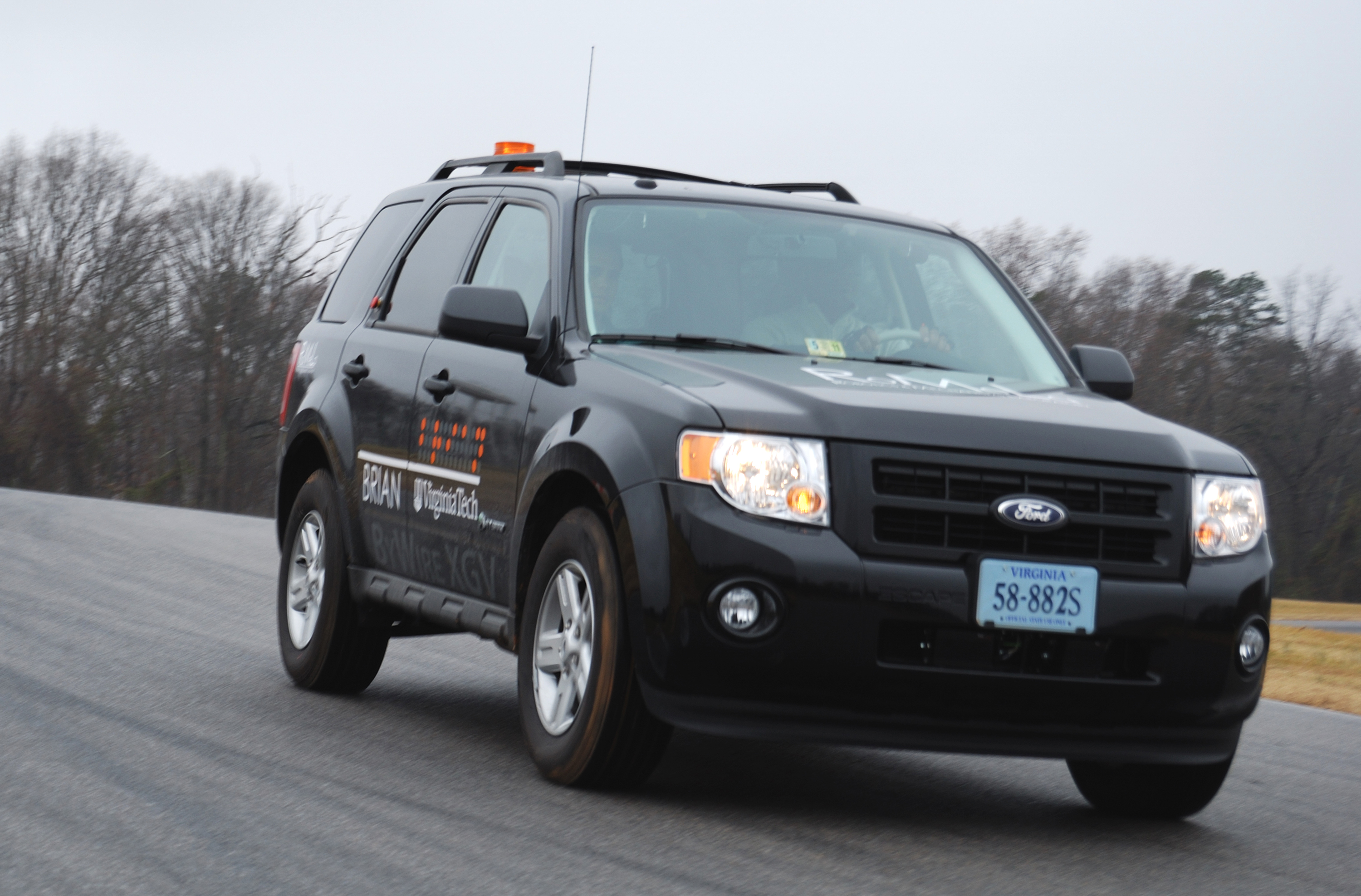Engineering students to debut new cars for the blind at Daytona racetrack

This Jan. 29 at the Daytona International Speedway’s Rolex 24 race, students with the Virginia Tech College of Engineering will debut two second-generation Blind Driver Challenge vehicles that allow the blind to drive using non-visual interface assistance technologies.
The modified 2010 Ford Escape Hybrid SUVs are part of the ongoing Blind Driver Challenge, a collaborative effort between the Virginia Tech and the nonprofit National Federation of the Blind, partnering with Blacksburg-based TORC Technologies. As part of the public debut at the Rolex 24 race, a blind person will drive one of the vehicles on the inner-track of the racing landmark Daytona International Speedway at 11:30 a.m. Saturday. A Virginia Tech blog will follow the action for those unable to attend the race.
College of Engineering graduate and undergraduate students have been working since 2006 on the Blind Driver Challenge, debuting a modified red buggy in summer 2009. A street-ready vehicle was the next step in the initiative. For months now, the Blind Driver Challenge team has tested the cars on campus, at the Virginia Tech Transportation Institute’s Smart Road and the Virginia International Raceway in Danville, Va. The team is now at Daytona, preparing for the demo.
“Imagining the tens of thousands of spectators cheering and watching the world's first public demo of our hard work makes my heart pound,” said Dennis Hong, an associate professor of mechanical engineering who is serving as adviser on the project. “I have asked my students, ‘How many times in your life time do you have an opportunity to change the world?’ Developing technology to help society, we are indeed changing the world right here, right now.”
Added Ryan Colby, a master’s student from Rochester, N.Y., studying mechanical engineering: “We are confident in our blind driver’s abilities going into the demo. In our limited practice time, I feel the blind driver has grown comfortable enough with the way the interfaces work to provide for a smooth and impressive demonstration on Saturday.”
The annual Rolex 24 event is a 24-hour endurance race for sports cars. The Blind Driver Challenges’ debut will precede the main race, and will take the flat inner track and not the main banked oval ramp. “Our excitement grows as we approach the day where we can reveal all of our hard work,” said Paul D’Angio, a doctoral student from Basking Ridge, N.J., also studying mechanical engineering.
“The foundation of many misperceptions about blindness will be shaken,” said Anil Lewis, director of strategic communications for the National Federation of the Blind. “This historic demonstration of a blind person independently driving an automobile will be a tremendous exhibition of the capacity of a blind person using innovative non-visual access technology to perform a task most people thought impossible for a blind person.”
The SUVs have been modified with TORC’s ByWire XGV technology, and coupled with such technology as laser range finders on the front and rear of the vehicle, cameras, and non-visual driver interface technologies such as a pair of wired gloves and a modified seat cushion. Much of the interface technology was developed by College of Engineering graduate and undergraduate students working in Hong’s Robotics and Mechanisms Laboratory, of which he is director.
The combined technology is used to help direct a driver on when to accelerate, brake, steer in a particular direction and other actions. In its beginning stages and years away from a street-ready reality, the gist of the Blind Driver Challenge is focused on developing technology that can convey real-time information about driving conditions to the blind motorist so that he or she can use their capacity to safely maneuver a car as would any sighted driver.
After several days of recent vehicle testing in Danville, Va., Mark Riccobono, executive director of the National Federation of the Blind’s Jernigan Institute, said on Jan. 19, 2011: “They would never believe what happened today but in 10 days they will.”




